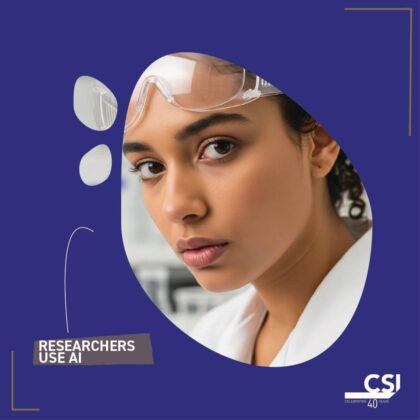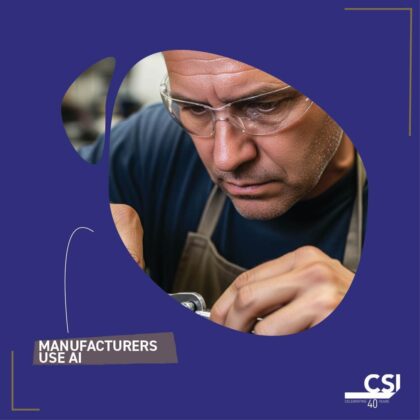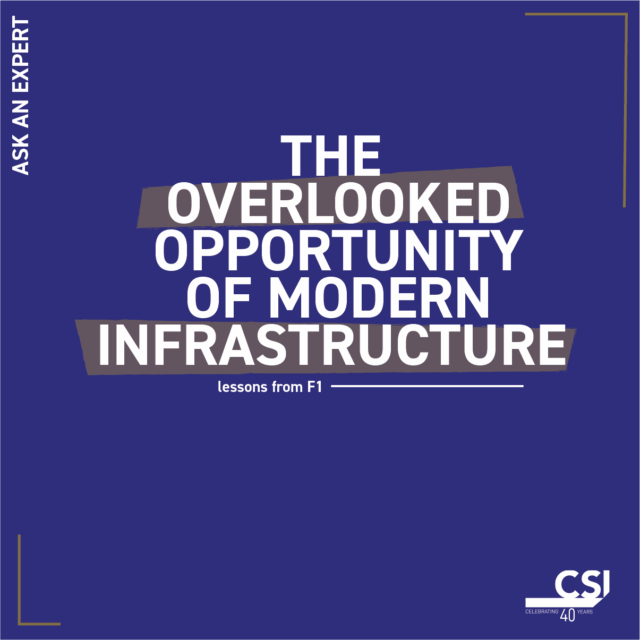Make AI Your Next (Strategic) Purchase
Time to read: 10 mins
Making AI Your Next Strategic Purchase ⬇️
If you’re starting feel to like AI is no longer an impractical abstraction, but rather a procurement priority, you’re not alone.
Artificial intelligence, across its different iterations, has long been seen as an end goal for most operations. Not unlike modernising to the cloud a decade ago, AI is heralded on a large promise to yet again digitally transform businesses. It’s a moment we see headlined often, but have we arrived at a climate of innovation where AI adoption is not only practical but beneficial?
In boardroom meetings across the world, CTOs and CFOs alike, running complex organisations, are asking whether the time has come to invest in their first AI production project.
Looking into 2026, AI is a strategic purchase. It means treating AI as an infrastructure investment that delivers measurable business outcomes, including resilience, compliance and productivity by default.
As we see the gradual commoditisation of AI, the most pressing question for technology leaders is about timing their investments into AI. Here’s how a strategic leap can write the next chapter in operational efficiency.
A DIFFERENT ANGLE
Making AI Your Next ‘Hire’
Whilst AI isn’t replacing jobs in the way headlines often controversially claim, is it time to rethink how we buy cutting-edge technologies altogether starting with artificial intelligence?
Imagine AI as a different kind of purchase. A hardware order to extend storage capacity can be a matter of straightforward procurement, where the requirement, existing platforms, and upgradability determines the purchase order.
AI will be a decision reached via a committee. Conventional buying wisdoms often single out decision making as the responsibility of a single person, or one department. Is it even practical to suggest that AI should only be an IT purchase?
In the very near future, we are likely to see the ‘big bang of AI’ as these projects pull in different teams collaboratively such as HR. Agentic AI is one example where advances are changing how we position technologies laterally across teams. In this scenario, AI can be recruited into a business for a variety of use-cases and applications beyond how infrastructure has been traditionally consumed.
Start with AI’s Foundations
The early hours of AI adoption led to culled projects or low-quality outputs, known informally as ‘AI slop’. What businesses are still learning is how AI isn’t one-size-fits-all.
It breaks into two distinct phases: training – where models learn intelligence – and inference – when models act intelligently.
Training is compute-intensive and often best suited to hyperscale public cloud environments, where on-demand GPU/TPU power accelerates exploration and experimentation.
Yet, it’s when AI moves into live operations, or inference, that these technologies start to unlock business value. Here’s what matters for inferencing:
- Latency
- Compliance
- Data protection
- Availability
That’s why on-premises infrastructure often makes more sense than other models – offering predictability, security, and control.
Consider platforms like IBM’s Fusion HCI appliance, built around Red Hat OpenShift and watsonx (think ‘AI in a box’), simplify AI deployment while keeping critical data within your walls.

EXCLUSIVE CONTENT
The Commoditisation of AI
As AI capabilities become more widely available, we’re entering a phase of commoditisation – where access to powerful models, APIs, and pre-trained agents is no longer a differentiator.
Just as cloud computing shifted from being a competitive advantage to an operational baseline, AI is quickly becoming a utility service. The winners in this new era won’t be those who simply “have AI,” but those who integrate it into their core workflows in a way that’s secure, governed, and strategically aligned with business goals. In other words, the competitive edge lies in how you deploy, control, and continually adapt AI to your unique operational context – not in the technology’s existence alone.
The fastest route to achieving this is platforming AI correctly the first time. The climate for innovation in this arena has reached fever pitch, which is why CSI is running early adopter programmes to get customers hands-on with infrastructure that could change the game forever.
What to Ask Before Saying “Yes” to AI
Succumbing to a blind AI purchase is risky for your data, resources and budget, so start with the essential exploratory questions. For those about to make a strategic investment in AI, try asking:
- What operational problem are we trying to solve?
From promise to practicality, here’s how to turn AI into a business asset and it’s simpler than you think: start with why. Does my business need to automate manual, laborious and slow tasks? Where can AI be useful in threat detection and mitigation? Are we even operationally ready for a new age of AI? - Will your infrastructure enable safe, scalable deployment?
If training can be a cloud-based decision, it’s highly recommended that inferencing sit closer to home – and nowhere is closer than on-premises.
On-prem solutions like IBM Fusion HCI or IBM Power11v offer high-performance inferencing with low latency and tight data control. - Can you integrate AI with existing operations (seamlessly)?
Agentic AI is only as strong as the ecosystem it’s delivered into. Ensure your AI platform can weave into ERP, CRM, DevOps, IT automation, and IT operations (AIOps).
IBM’s watsonx approaches this with tools orchestrating everything from active agents to governance.

AI Applications That Move the Needle
AI is the new workhorse for innovation and operational efficiencies. AI apps are widespread, and the most common testbed for organisations trialling new technologies.
Consider two of the most prominent AI apps for modern businesses:
- Microsoft Copilot embeds AI into everyday tools like Word, Excel, Teams, and developer workflows, interacting across your Office 365 suite. Boost productivity with tight data controls to streamline how teams navigate and discover files and policies.
- watsonx.ai, -Orchestrate, -Code Assistant, and -Governance help automate tasks, accelerate developer pipelines, and ensure AI remains explainable and compliant.
These capabilities aren’t futuristic, they’re enterprise ready, deployable and can become key strategic assets with the right infrastructure investments.
These capabilities aren’t futuristic, they’re enterprise ready, deployable and can become key strategic assets with the right infrastructure investments.
WHAT OUR DEVELOPERS SAY
Change the Game with AI (Applications)
From another angle, AI shifts into a strategic buy only when it intersects with control, trust, and integration.
If the conversation starts at AI applications like Microsoft Copilot, then what goals does it answer? Trained and enabled, AI applications can make the world of difference, but a blind buy into a new tool with no designated use-case is like extending storage before you have a growth in data. Rewind, take the conversation back to platforming AI and discuss where, operationally, you can forecast benefit from innovation in this space. Many customers today are using AI applications departmentally and laterally deploying tools, such is the case with HR and policy management.
As you plan your next strategic purchase, think of AI platforms as more than hardware and software: they’re foundational building blocks. Whether leveraging cloud for training or building inference-ready on-prem stacks, choose platforms that solve problems today and scale for tomorrow.
AI Isn’t Your Usual Purchase. Just Ask Procurement.
When AI has the strategic potential and creative uplift to catapult your daily operations into a new era of productivity and automated efficiencies, maybe the problem is how you position it within your technology ecosystem as just another expense.
You can still calculate the ROI of AI in terms of the risk is reduces (faster resolutions of incidents to meet SLAs, for example), operational cost savings (when workflows become automated), and new capabilities (RAG-based decision support systems designed with AI).
Yet, singling out AI as a one-off software expense could be where you go wrong. Instead, consider how these technologies act as an ecosystem of interlinked capital investments. The greater customer demand, the better employee training, the more proficient the platforms, the greater the value.

Don’t Abandon AI at Checkout.
If you make it as far as ‘checkout’ with the idea of adopting AI operationally, there’s a few ways to ensure that the early stages of your next project goes smoothly. Consider the following:
- Are there any early adopters programmes that my company can influence?
- Who are the AI ‘leaders’ in my organisation?
- Do I have any use-cases that could define where to start with AI?
- Is AI an investment at all levels in my business?
The CSI Difference
We know the road to AI innovation is founded in your infrastructure choices, but we also believe in helping to design, integrate, secure, and optimise your AI deployment.
No matter how you want to layer in AI into your operations, start with the use-cases, and understand where the best fit is. For a no-obligation call with our specialists, get in touch today – and find out how to get a competitive edge with AI.
About the author

IBM Power
What the Next Decade of Infrastructure Looks Like
EXCLUSIVE LOOK The 2025 Infrastructure Reality Check The infrastructure heroes of the past decade earned their stripes on three fundamental…

Storage
The Overlooked Opportunity of Modern Infrastructure
Hybrid Cloud in the Fast Lane If the allure of motorsport wasn’t in its franchises, or thrilling speeds alone, there’s…

Storage
What Happens When Life Sciences (Finally) Overcomes its Big Data Problem
Turn Data Deluge into Discovery The global healthcare and life sciences industry is on the front line of some of…
Ready to talk?
Get in touch today to discuss your IT challenges and goals. No matter what’s happening in your IT environment right now, discover how our experts can help your business discover its competitive edge.
